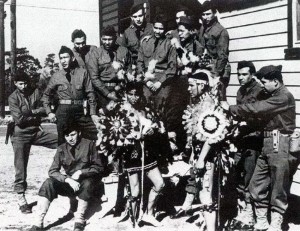The year is 1917 when the tide of war brings the United States of America into WWI. After the sinking of the Lusitania by a German U-boat in 1915 and the interception of the Zimmermann telegram, President Woodrow Wilson declares war against Germany and plunges America into war.
During the U.S. war campaign, the Germans were quick to adapt and began deciphering communications between the allies. Faced with a comprise in communication, a company commander in the 36th regiment found a solution to this setback among his men. Overhearing two soldiers speaking in Choctaw, the commander quickly rushed them to his superiors to showcase his findings.
With the Choctaw language virtually unknown to Germans, Choctaw soldiers were dispersed among fields company headquarters to combat the German code breakers. These native Choctaw speakers first began operation on Oct. 26, 1918 in the aid of two companies withdrawing from the front.
Succeeding with remarkable results in the withdrawal, the Choctaw code speakers provided support in two military offensives taking place at a German position called Forest Ferme.
[Lacking the words for certain modern-day military terms, they used “big gun” for artillery, “little gun shoot fast” for machine gun, “stone” for grenade and “scalps” for casualties, among other substitutions, thereby becoming true code talkers rather than simply communications operators speaking a little-known language. ]
The Choctaw soldiers were not the only Native American code speakers among the U.S. military ranks, but were some of the most recognized and would serve an essential influence on the roles of Native American speakers in the second World War to come.


Leave a response